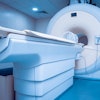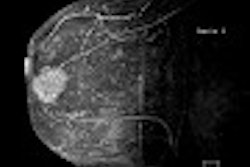CHICAGO - Radiologists at William Beaumont Hospital outside Detroit say they can reduce the time needed to delineate hibernating myocardium and assess microvascular dysfunction by more than a third.
The key to saving time is a novel contrast-enhanced cine (CEC) magnetic resonance system developed by Dr. Gilbert Raff and colleagues at the hospital in Royal Oak, MI. Raff is the medical director of cardiac magnetic resonance.
"Standard imaging studies require a two-step process," Raff said. "Analysis is performed by standard cardiac magnetic resonance techniques that combine delayed enhancement and a cine function study." Raff said the new CEC method "simultaneously does both functions, which saves valuable time."
To prove his point, Raff compared CEC and standard MRI for assessment of myocardial function and microvascular dysfunction. "The two methods were compared for diagnosis and total exam time," he said.
In results presented Tuesday at the American College of Cardiology (ACC) meeting, Raff said that 54 patients were analyzed using both methods. Forty-three of the patients had confirmed acute MI. The analyses were conducted at 24 hours, one week and 3 months post-infarct.
CEC and standard MRI were compared for position of non-viability, length of involvement and microvascular dysfunction as a percent of the total non-viable area.
The non-viable position by CEC and standard MRI were similar (0.81, p<.0001), as was length (0.54, p<0.0001), percentage of segmental area (0.59, p>0.0001) and microvascular dysfunction percentage.
But CEC analysis "cut exam time by 34%," said Raff. The speed of the simultaneous assessment suggests that "we can possibly use this technique to image the heart as it infarcts and these images could be done at infarct and repeated after PTCA," said Raff.
"Of course, that would only be possible in facilities where MR and cath labs are located in close proximity. At William Beaumont that is the case, and it is theoretically possible that we could do the imaging study while the patient was being prepped for angiography."
Commenting on the study, Dr. Elliott Antman called the CEC images "striking; this is the view as the heart muscle is dying." Faster imaging "would be invaluable in determining treatment," said Antman, who is an associate professor of medicine, cardiovascular division, at Brigham & Women’s Hospital in Boston.
Raff said the system uses a gadolinium low-ionic contrast agent. "Any MR scanner capable of cardiac MRI can be used for CEC," he said.
By Peggy PeckAuntMinnie.com contributing writer
April 3, 2003
Related Reading
Investigational agent boosts MR coronary artery imaging, March 11, 2003
Cardiac MR reveals evidence of subendocardial ischemia in syndrome X, July 22, 2002
Contrast agents herald new progress in MR lymphography, August 9, 2002
Copyright © 2003 AuntMinnie.com


.fFmgij6Hin.png?auto=compress%2Cformat&fit=crop&h=100&q=70&w=100)




.fFmgij6Hin.png?auto=compress%2Cformat&fit=crop&h=167&q=70&w=250)











